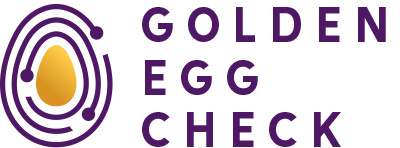Understanding investor documentation requirements
When you approach investors for startup funding, they need comprehensive documentation to evaluate your business thoroughly. This documentation serves multiple purposes beyond simple information gathering.
Proper documentation builds trust by demonstrating your professionalism and attention to detail. Investors see hundreds of pitches, and well-organised materials immediately set you apart from less prepared entrepreneurs. Your documentation package reflects your ability to manage important business processes.
The documentation requirements also help accelerate investment decisions. When investors can quickly access the information they need, they can move through their evaluation process more efficiently. Missing or incomplete documents often delay funding rounds as investors wait for additional materials.
Different types of investors may emphasise different documents based on their investment thesis and focus areas. Understanding what each investor values most allows you to prioritise your preparation accordingly.
What financial documents do investors want to see?
Financial documentation forms the backbone of any investment evaluation. Investors need to understand your current financial position, historical performance, and future projections to assess the investment opportunity.
Your profit and loss statements should cover at least the past three years if available, or since inception for newer companies. These statements show your revenue trends, cost structure, and operational efficiency. Investors particularly scrutinise recurring revenue patterns and gross margins.
Balance sheets provide insight into your assets, liabilities, and equity structure. They reveal your working capital position and debt obligations. Cash flow statements demonstrate how effectively you manage cash generation and utilisation.
Financial projections extending three to five years into the future are equally important. These should include detailed assumptions about market growth, customer acquisition, and scaling costs. Your revenue model documentation should clearly explain how you generate income and your path to profitability.
Monthly financial reports for the current year help investors understand recent performance trends and seasonal variations in your business.
Which business planning documents are most important?
Your business plan components provide investors with strategic context for your financial projections. A comprehensive business plan demonstrates your understanding of the market opportunity and your strategy for capturing it.
Market analysis documents should include market size calculations, growth projections, and customer segmentation analysis. Investors want to see that you understand your target market deeply and can identify specific customer needs you address.
Competitive analysis documentation helps investors understand your positioning relative to existing solutions. This should include direct competitors, indirect alternatives, and your unique competitive advantages. Avoid claiming you have no competition, as this suggests insufficient market understanding.
Your go-to-market strategy documentation outlines how you plan to acquire customers and scale revenue. Include customer acquisition costs, sales processes, marketing channels, and partnership strategies.
Operational plans detail how you will execute your strategy, including hiring plans, technology development roadmaps, and key milestones. These documents help investors assess the feasibility of your projections.
What legal documents do investors typically request?
Legal documentation protects both your interests and those of potential investors. These documents also reveal potential risks or complications that could affect the investment.
Incorporation documents establish your company’s legal structure and ownership. Investors need to verify that your company is properly established and that you have clear title to offer equity stakes.
Shareholder agreements outline the rights and obligations of existing shareholders. These documents reveal any special rights, voting agreements, or transfer restrictions that could affect new investors.
Intellectual property documentation includes patents, trademarks, copyrights, and trade secrets that give your company competitive advantages. For technology companies, IP protection often represents significant value.
Contracts with key customers or suppliers demonstrate business relationships and reveal dependencies. Material contracts should be disclosed, including terms that could affect future operations or profitability.
Compliance documentation shows adherence to relevant regulations in your industry. This includes licences, permits, and certifications required for your business operations.
How detailed should your pitch deck and presentation materials be?
Your pitch deck serves as the first impression for many investors, so it must be comprehensive yet concise. A well-crafted presentation can open doors to deeper conversations about investment opportunities.
Comprehensive pitch decks typically include slides covering your problem statement, solution, market opportunity, business model, traction, team, competition, financials, and funding requirements. Each slide should convey key information clearly without overwhelming detail.
Executive summaries provide a concise overview of your entire business proposition. This document often determines whether investors request additional information or schedule meetings.
Team bios should highlight relevant experience and expertise that qualifies your team to execute the business plan. Investors often prioritise teams when making investment decisions, making this section particularly important.
Product demonstrations through videos, screenshots, or prototypes help investors understand your solution’s functionality and user experience. Visual elements often communicate more effectively than written descriptions.
Supporting presentation materials might include detailed financial models, market analysis, or technical specifications that provide additional depth for interested investors.
What operational documents help investors assess your startup?
Operational documentation demonstrates your company’s maturity and execution capabilities. These materials help investors understand how well you manage day-to-day business operations.
Organisational charts show your current team structure and reporting relationships. Include plans for future hiring and key roles you need to fill as you scale operations.
Key employee contracts reveal your ability to retain important team members. Employment agreements, equity grants, and non-compete clauses all factor into investor evaluations of team stability.
Customer feedback documentation provides validation of your solution’s value. Positive feedback from users validates your product-market fit claims and demonstrates customer satisfaction.
Product roadmaps outline your development priorities and timeline for new features or capabilities. This helps investors understand your innovation pipeline and resource requirements.
Technology documentation includes system architecture, security measures, and scalability plans. For tech startups, this information helps investors assess technical risks and competitive positioning.
Operational dashboards showing key performance indicators demonstrate your ability to measure and manage business performance effectively.
Preparing your investor documentation package effectively
Organising your documentation package efficiently can make the difference between a smooth funding process and frustrating delays. Professional presentation of materials reflects your operational capabilities.
Create a logical folder structure that groups related documents together. Use consistent naming conventions and include a master index that explains what each document contains and when it was last updated.
Maintain secure data rooms using professional platforms that allow you to control access and track document usage. This demonstrates security awareness whilst providing convenient access for multiple investors simultaneously.
Ensure accuracy and completeness by having legal and financial advisors review all materials before sharing. Inconsistencies between documents can raise concerns and damage investor confidence.
Regular updates to your documentation package keep information current as your business evolves. Outdated materials can mislead investors and complicate due diligence processes.
Preparing comprehensive documentation packages requires significant time and attention to detail. A structured approach helps startups identify which documents investors prioritise most, ensuring you invest your preparation time where it will have the greatest impact on funding success.




